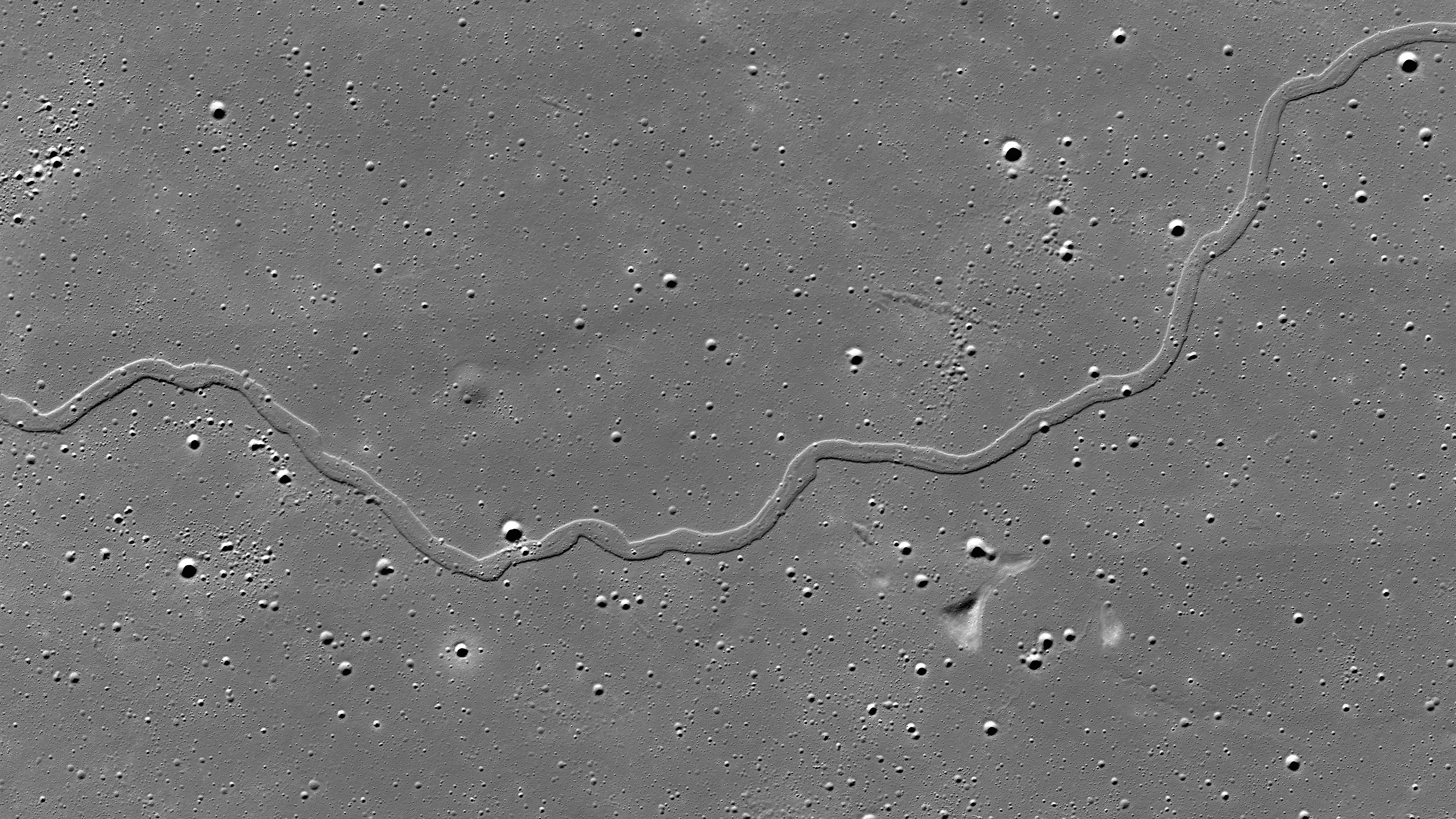The moon didn’t die as early as we thought
Samples from China’s lunar lander could change everything we know about the moon’s volcanic record.

The moon may have been more volcanically active than we realized.
Lunar samples that China’s Chang’e 5 spacecraft brought to Earth are revealing new clues about volcanoes and lava plains on the moon’s surface. In a study published today in Science, researchers describe the youngest lava samples ever collected on the moon.
The samples were taken from Oceanus Procellarum, a region known for having had huge lakes of lava that have since solidified into basalt rock. The sample they analyzed most closely indicates that the moon experienced an era of volcanic excitement that lasted longer than scientists previously thought.
Researchers compared fragments from within that same sample to determine when molten magma had crystallized. The results surprised them. In their early lives, small, rocky bodies like the moon typically cool faster than larger ones. But their observations showed that wasn’t necessarily the case for our closest heavenly neighbor.
“The expectation is that the moon is so small that it will probably be dead very quickly after formation,” says Alexander Nemchin, a professor of geology at Curtin University in Perth, Australia and a co-author of the study. “This young sample contradicts this concept, and in some way, we need to rethink our view of the moon a little bit, or maybe quite a lot.”
Using isotope dating and a technique based on lunar crater chronology, which involves estimating the age of an object in space in part by counting the craters on its surface, the team determined that lava flowed in Oceanus Procellarum as recently as 2 billion years ago.
Chang’e 5 was China’s first lunar sample-return mission and the first probe to bring back lunar material since 1976. After launching in late November and returning in early December 2020, it’s one of at least eight phases in China’s lunar program to explore the entirety of the moon.
Nemchin says there’s no evidence that radioactive elements that generate heat (such as potassium, thorium, and uranium) exist in high concentrations below the moon’s mantle. That means those elements probably didn’t cause these lavas flows, as scientists had thought. Now, they will have to look for other explanations for how the flows formed.
The moon’s volcanic history could teach us more about the Earth’s. According to the giant impact theory, the moon may just be a chunk of Earth that got knocked loose when our planet collided with another one.
“Anytime we get new or improved information about the age of the stuff on the moon, that has a knock-on effect for not just understanding the universe, but volcanism and even just general geology on other planets,” says Paul Byrne, an associate professor of earth and planetary sciences at Washington University in St. Louis, who was not involved in the study.
Volcanic activity not only shaped how the moon looks—those old lava beds are visible to the naked eye today as huge dark patches on the moon’s surface—but may even help answer the question of whether we’re alone in the universe, Byrne says.
“The search for extraterrestrial life in part requires understanding habitability,” Byrne says. Volcanic activity plays a role in the cultivation of atmospheres and oceans, key components for life. But what exactly these new findings tell us about potential life elsewhere remains to be seen.
Deep Dive
Space
How to safely watch and photograph the total solar eclipse
The solar eclipse this Monday, April 8, will be visible to millions. Here’s how to make the most of your experience.
The great commercial takeover of low Earth orbit
Axiom Space and other companies are betting they can build private structures to replace the International Space Station.
How scientists are using quantum squeezing to push the limits of their sensors
Fuzziness may rule the quantum realm, but it can be manipulated to our advantage.
Stay connected
Get the latest updates from
MIT Technology Review
Discover special offers, top stories, upcoming events, and more.